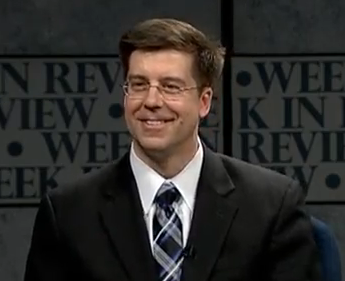
How Over-Optimism Can Drive Business & NPO Success
 When I worked in TV Programming at Public Broadcasting Service (PBS), we gathered the department in an undersized conference room each Friday afternoon to review current projects. John Wilson, head of Programming at the time, didn’t always attend those meetings. But this particular Friday, he did… as he had a serious item he wanted to discuss with the group. PBS and its producing partner were developing a new breakthrough TV series (which I won’t name), something that PBS and its member stations really needed to reinvigorate the schedule. But as with most out-of-the-box projects, this one was gathering its share of detractors… some of them within the walls of our Crystal City headquarters. There was rapt attention in the room as John passionately and angrily told the group that this negativism toward the project would feed on itself and jeopardize the series’ success if left unchecked. A self-fulfilling prophecy would become reality if the team didn’t get onboard and make every effort to work in a positive manner.
When I worked in TV Programming at Public Broadcasting Service (PBS), we gathered the department in an undersized conference room each Friday afternoon to review current projects. John Wilson, head of Programming at the time, didn’t always attend those meetings. But this particular Friday, he did… as he had a serious item he wanted to discuss with the group. PBS and its producing partner were developing a new breakthrough TV series (which I won’t name), something that PBS and its member stations really needed to reinvigorate the schedule. But as with most out-of-the-box projects, this one was gathering its share of detractors… some of them within the walls of our Crystal City headquarters. There was rapt attention in the room as John passionately and angrily told the group that this negativism toward the project would feed on itself and jeopardize the series’ success if left unchecked. A self-fulfilling prophecy would become reality if the team didn’t get onboard and make every effort to work in a positive manner.
Ultimately, the project failed. To this day, I really don’t know if our internal lack of support had anything to do with it. But of one thing I’m certain: it didn’t help.
This concept of Optimism is one each of us faces in our business, nonprofit or government offices. When confronted with a challenge, we can choose to take a positive or negative outlook… to project into the future whether something will succeed or fail. Of course, optimism can overreach… becoming overconfidence when risks are underestimated or ignored (such as on Wall Street in the 2000s).
But what happens when organizations apply a level of ‘over-optimism’ in how they approach projects? That research is spelled out in a recent paper by Gilles Hilary titled “The Bright Side of Over-Optimism”. Hilary describes how high levels of corporate optimism cannot only provide an emotional lift, but a financial boost as well. Companies (or NPOs) gain some ‘early wins’, boosting employee confidence in their ability to be successful. Management then leverages those good feelings to build more ambitious projects, fueling those optimistic feelings that result in employees working harder to bring more and more projects to successful conclusions.
“When people have been successful in the past, they become dynamically more optimistic. They work harder as a result, and the performance of the firm increases. If you don’t suffer from over-optimism, your ultimate result is 10. If you suffer from optimism, you think it’ll be 20, and you work hard and you get 15. That’s still below 20, but it’s more than the 10 you would have got without this bias,” Hilary says.
If you run a business or nonprofit, you already intrinsically understand how you as the leader always need to remain ‘on’, providing a positive outlook and face to the company, both internally and externally. You ARE a cheerleader for your organization, keeping your team motivated no matter the challenges that confront you. But as with PBS, the greatest challenge is when you know you need to go a new direction that is completely different from the norm… and there is no obvious path to success. In these times, leaders have to dig into their ‘Optimism Vault’ and extract enough currency to motivate their teams & Boards to take a chance.
That’s when a leader really makes her/his mark.
How have you ever been over-optimistic in your organization… your church… your family? Feel free to share your examples below.


I love this piece, especially the part about digging into the optimism vault for extra currency. I must admit, some people think that I’m foolishly optimistic, but those are the pessimists, so I try not to listen too much to them. I don’t think optimism can be forced on someone, but when it spreads contagiously, it can go viral and bring about great things! And it doesn’t necessarily spread though a group–it can spread within a single person!